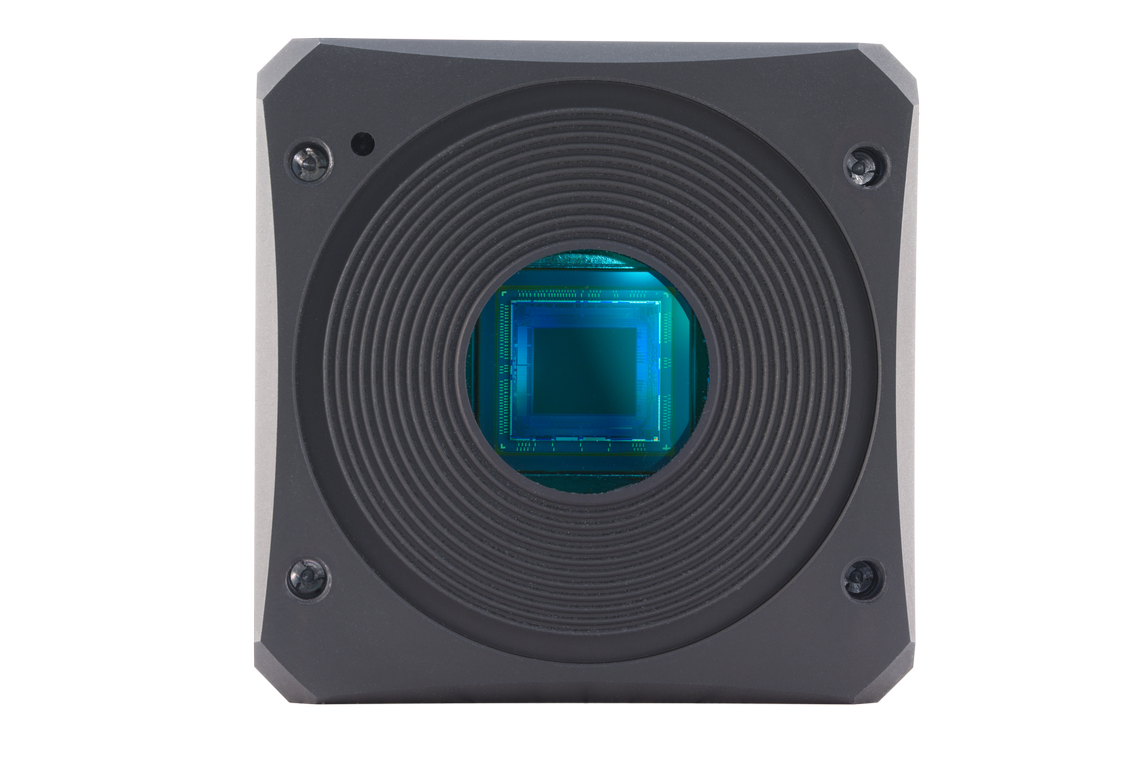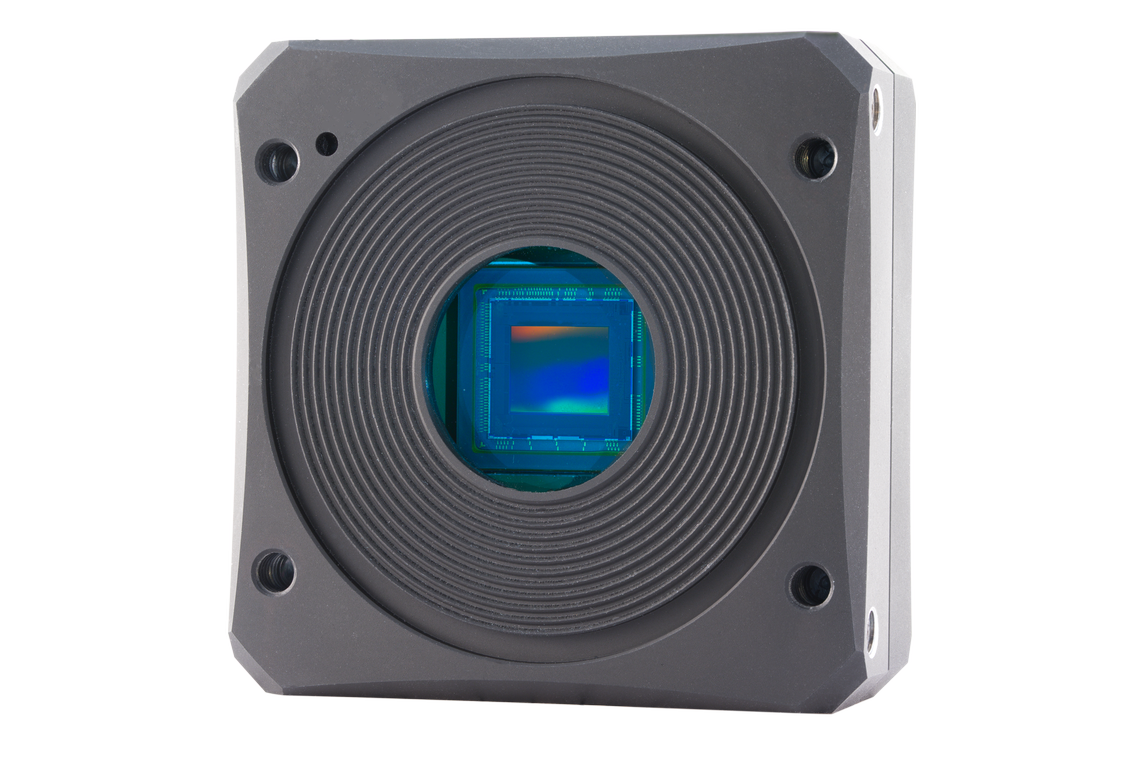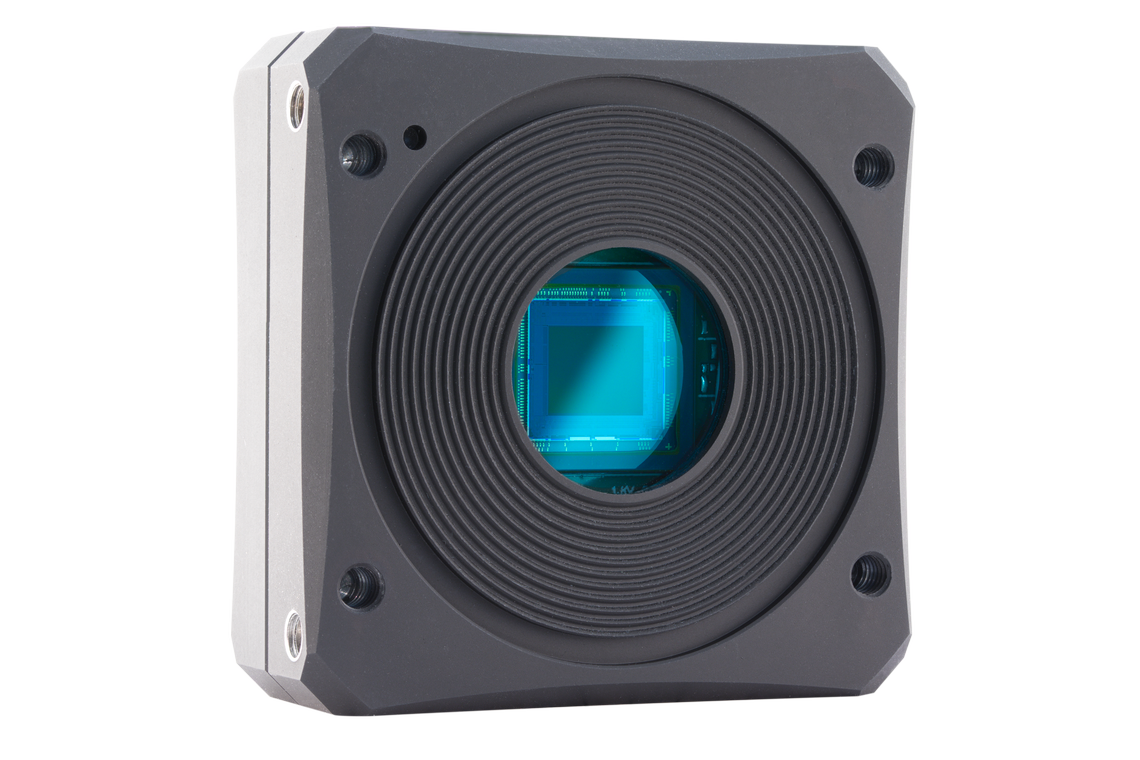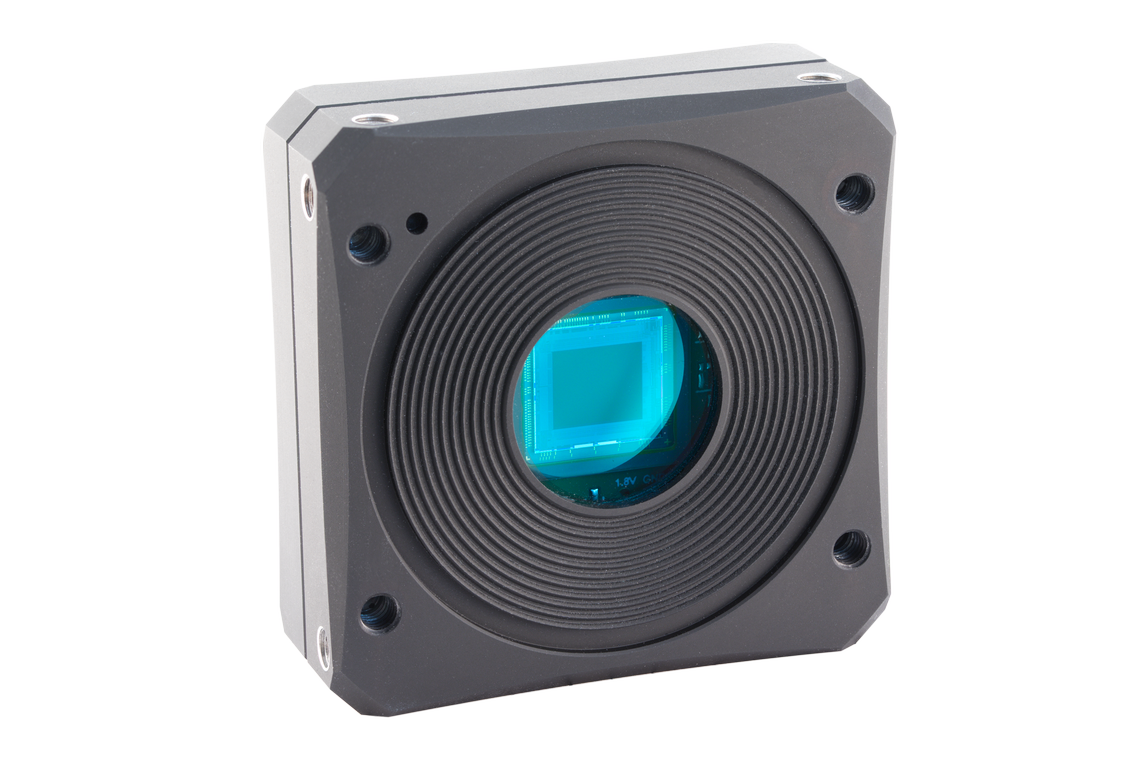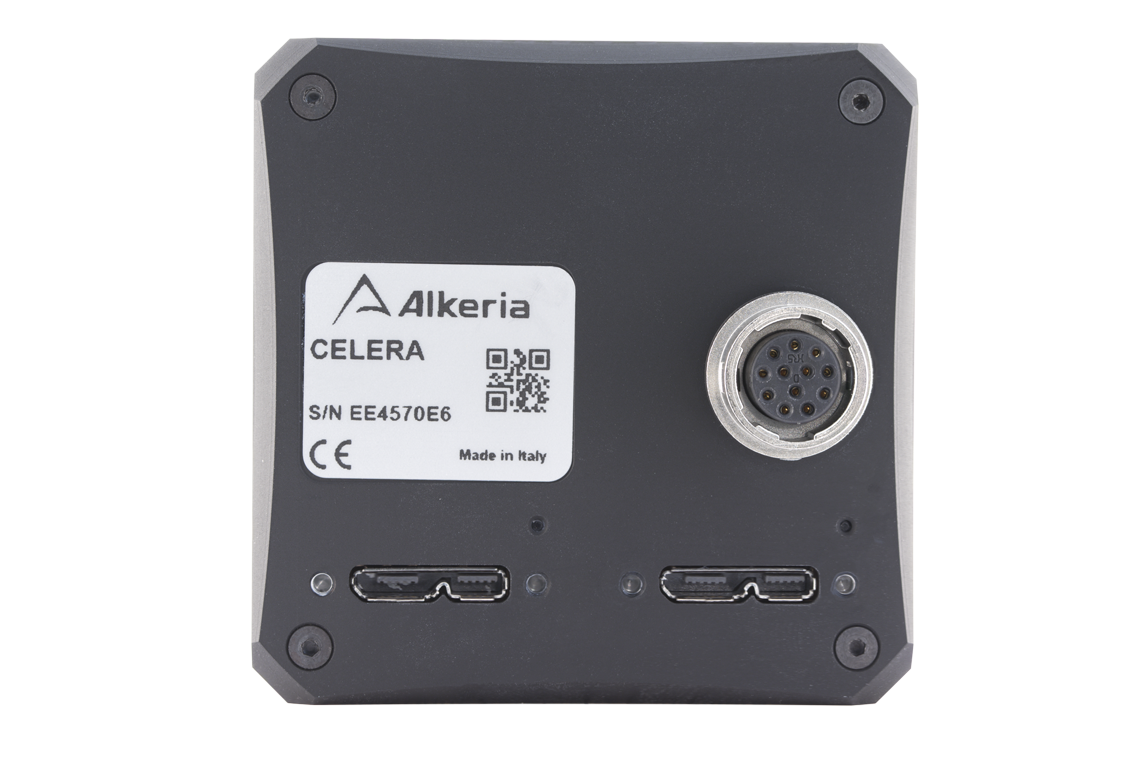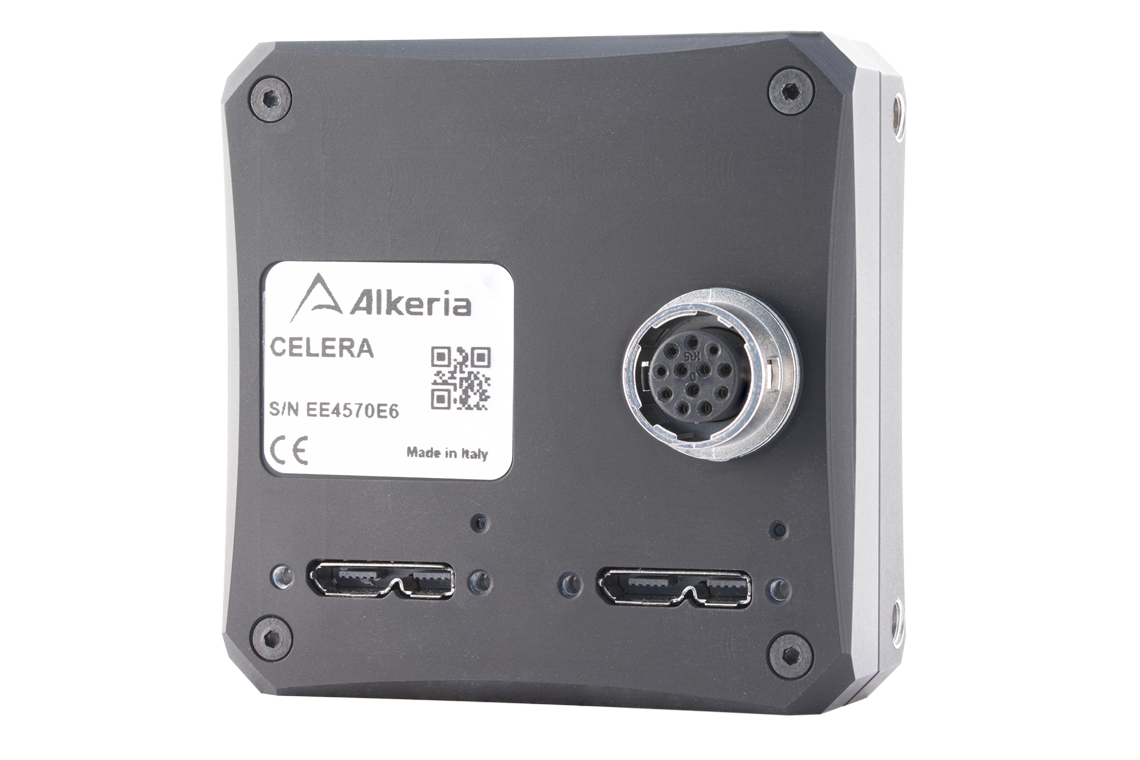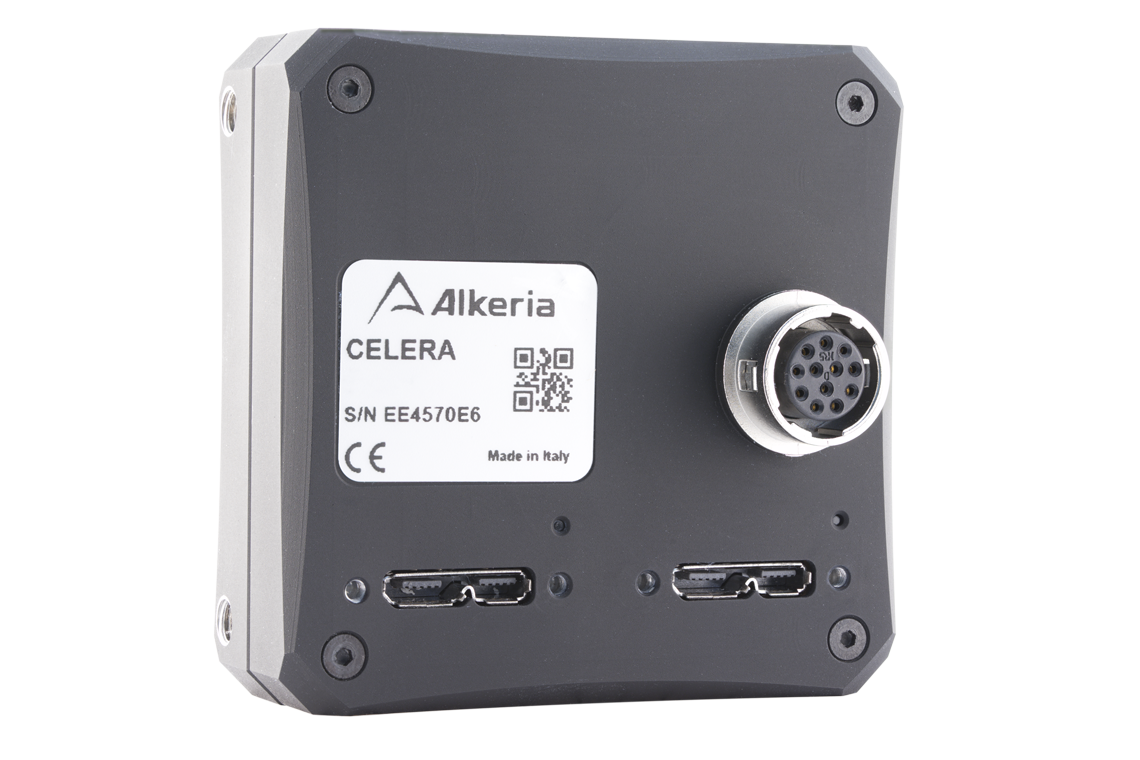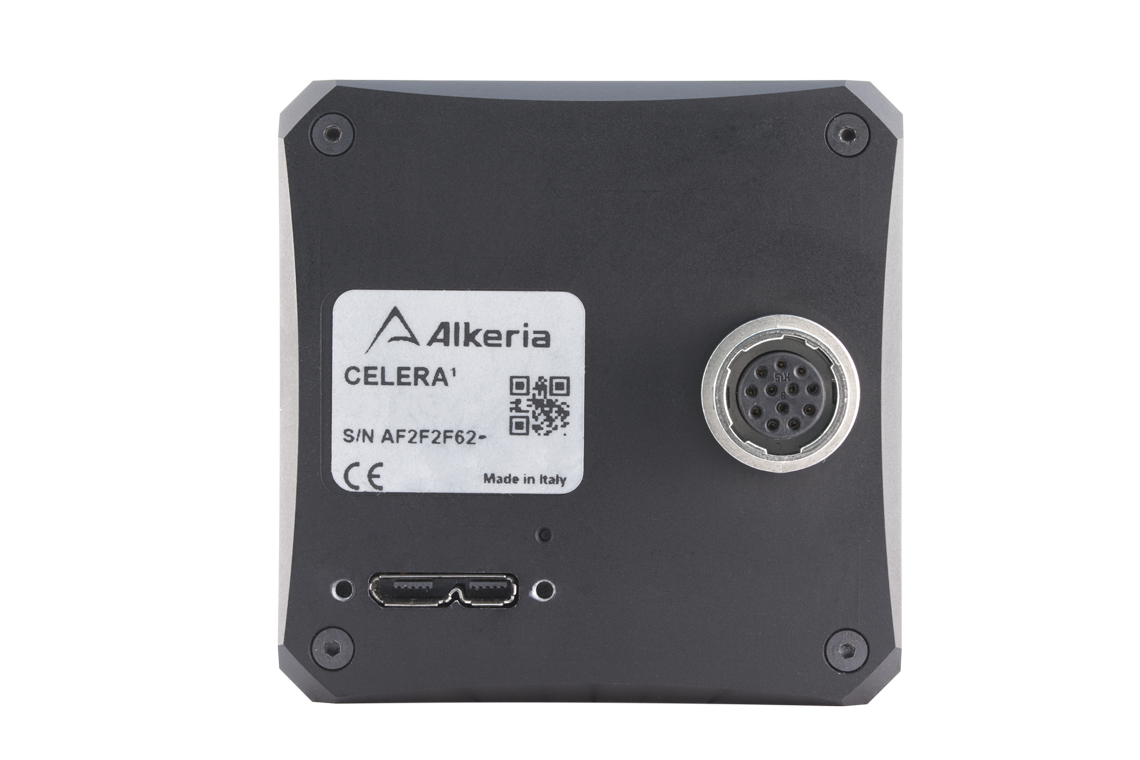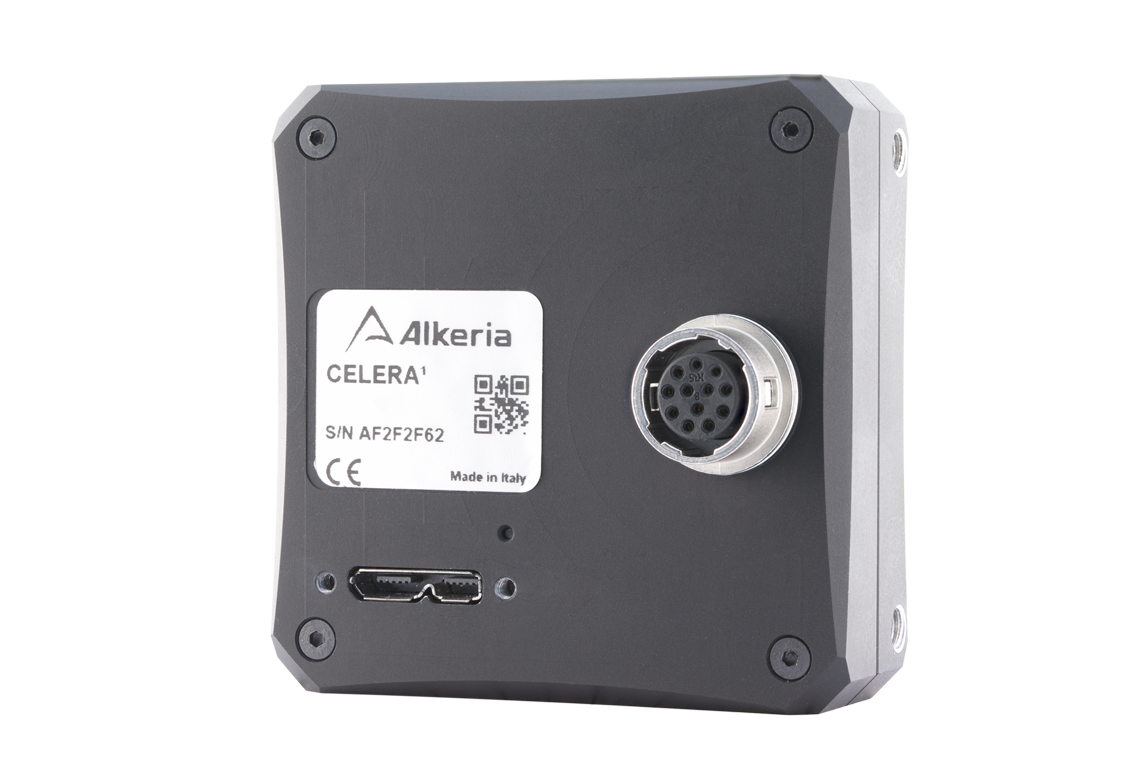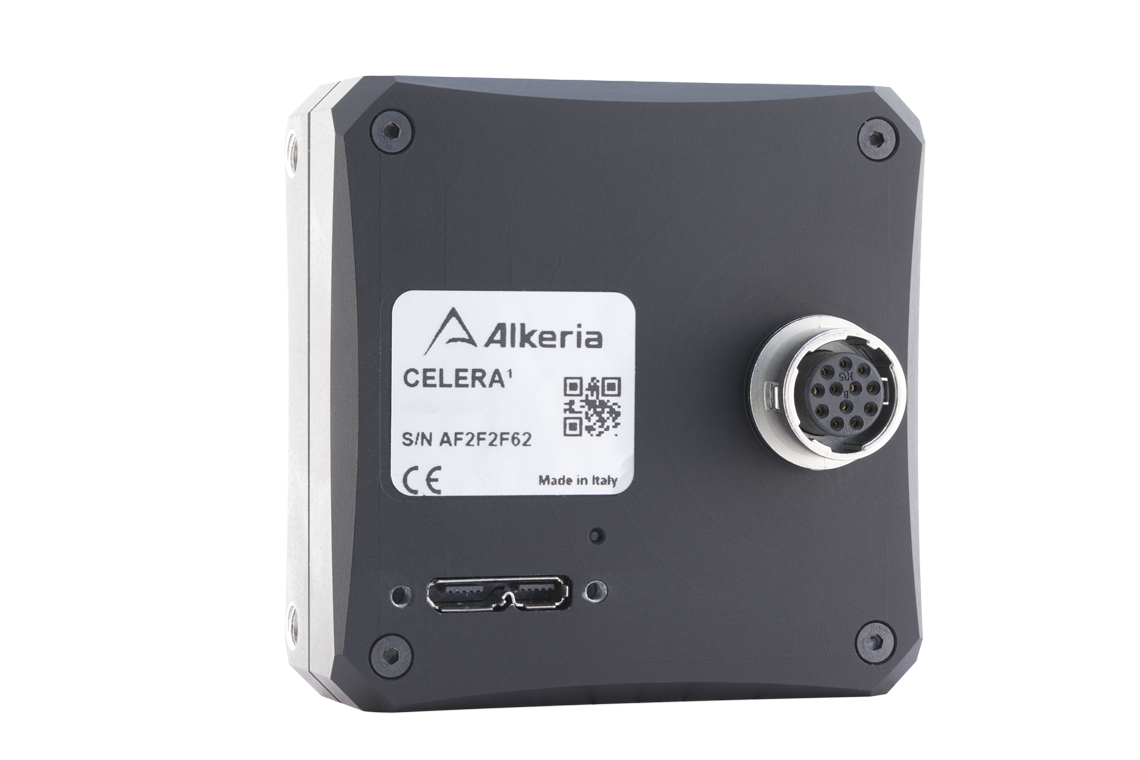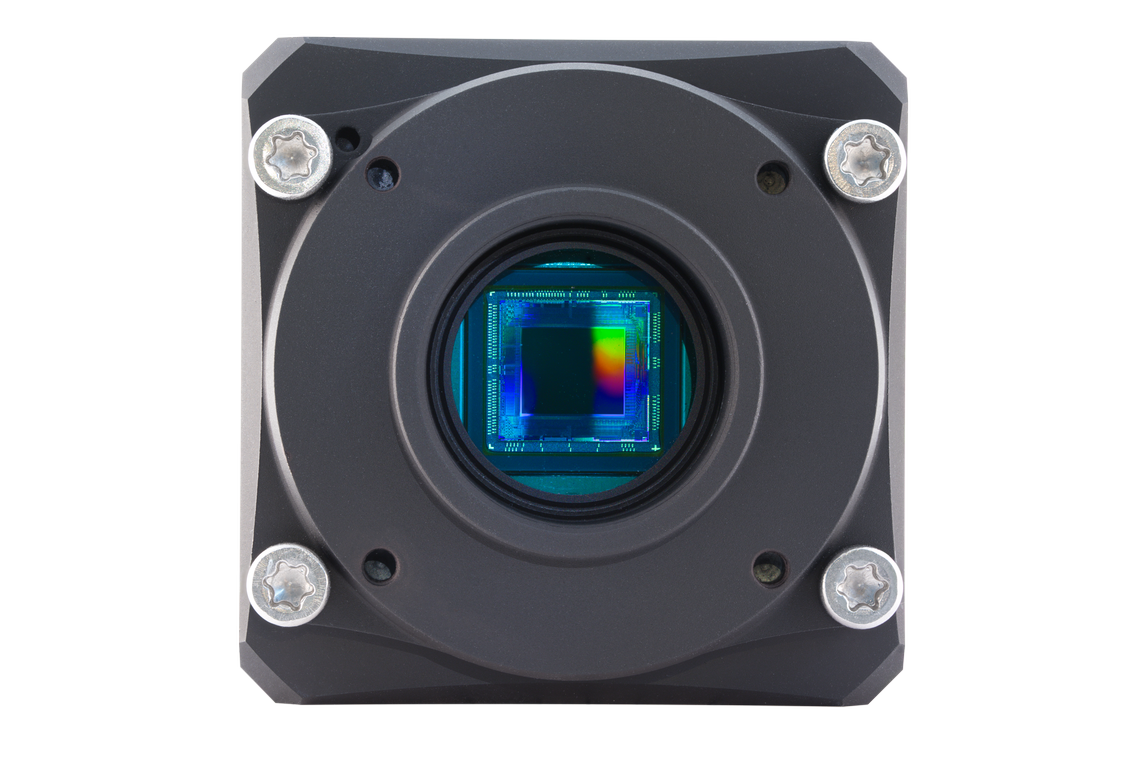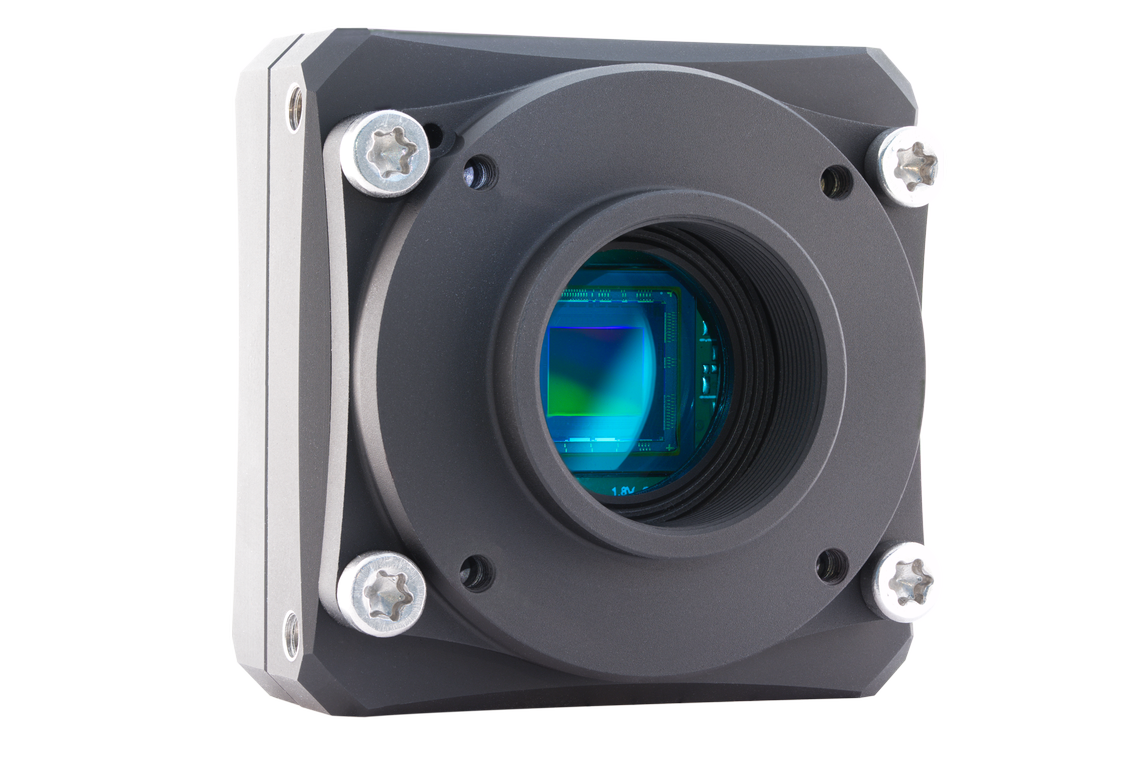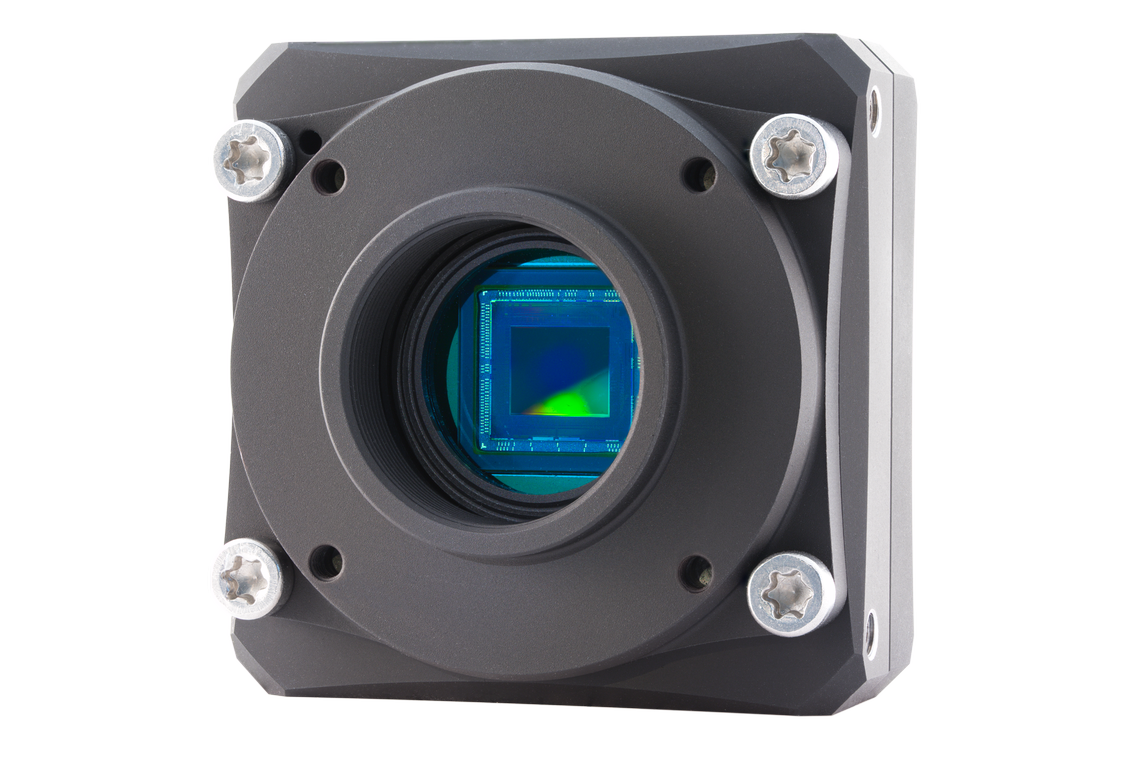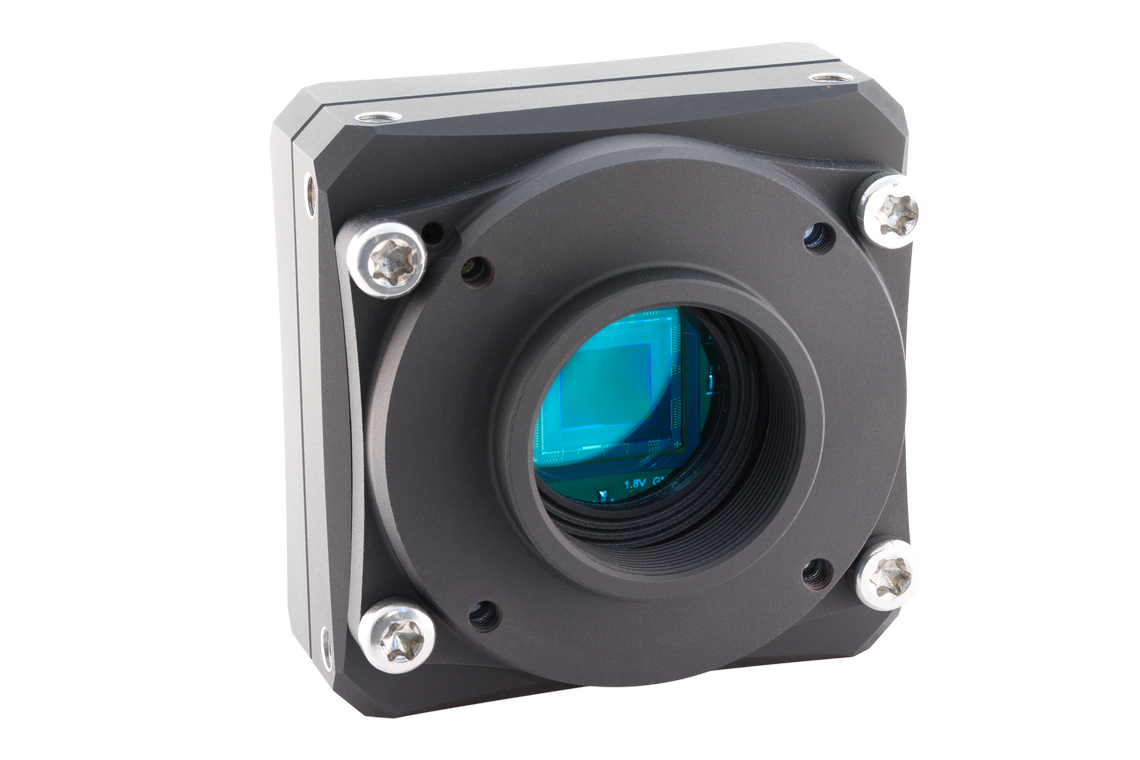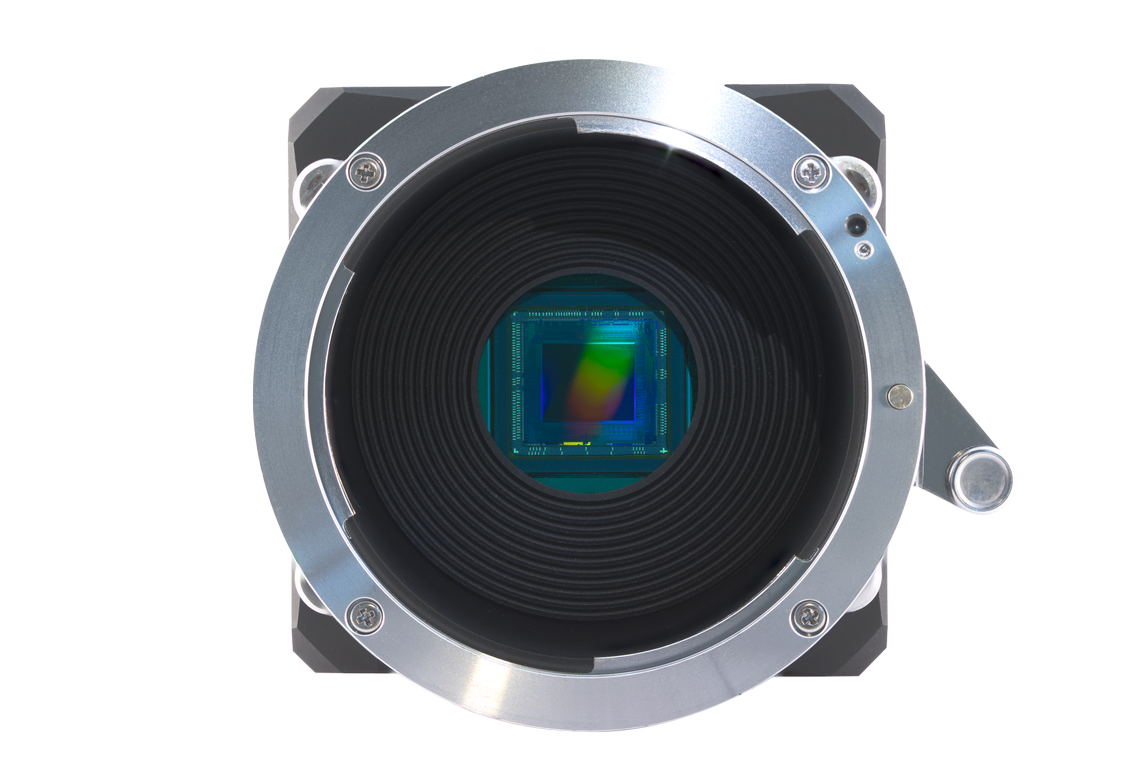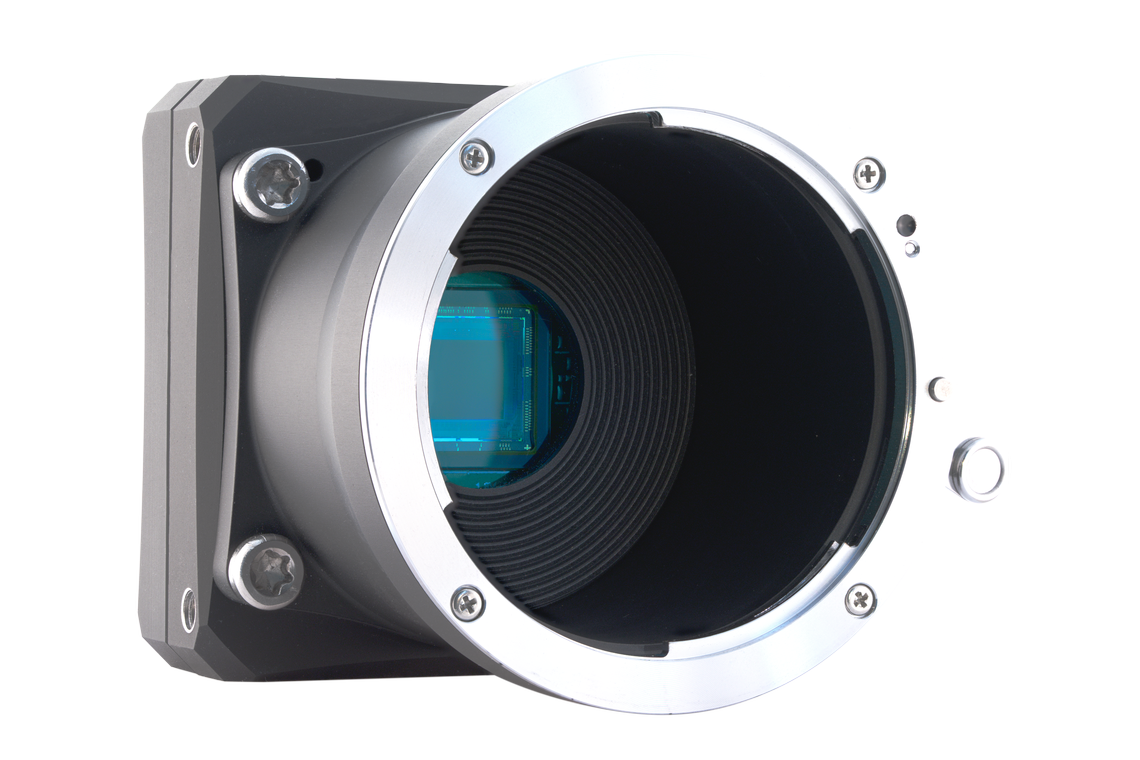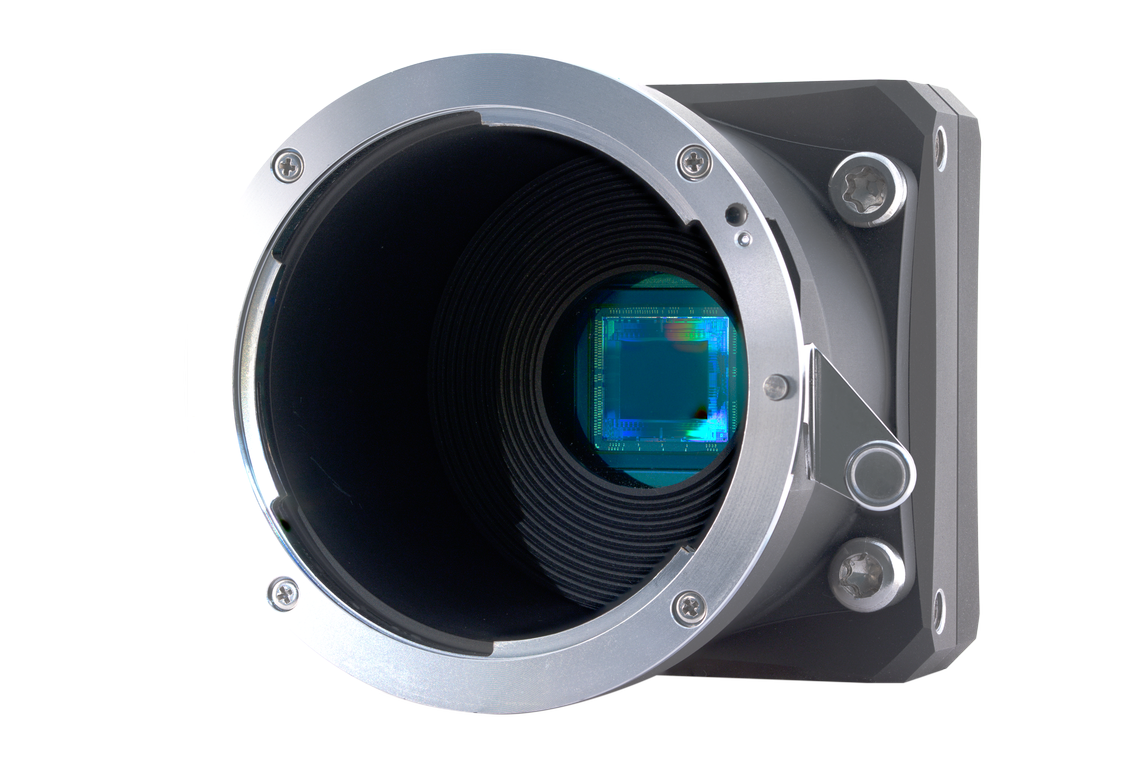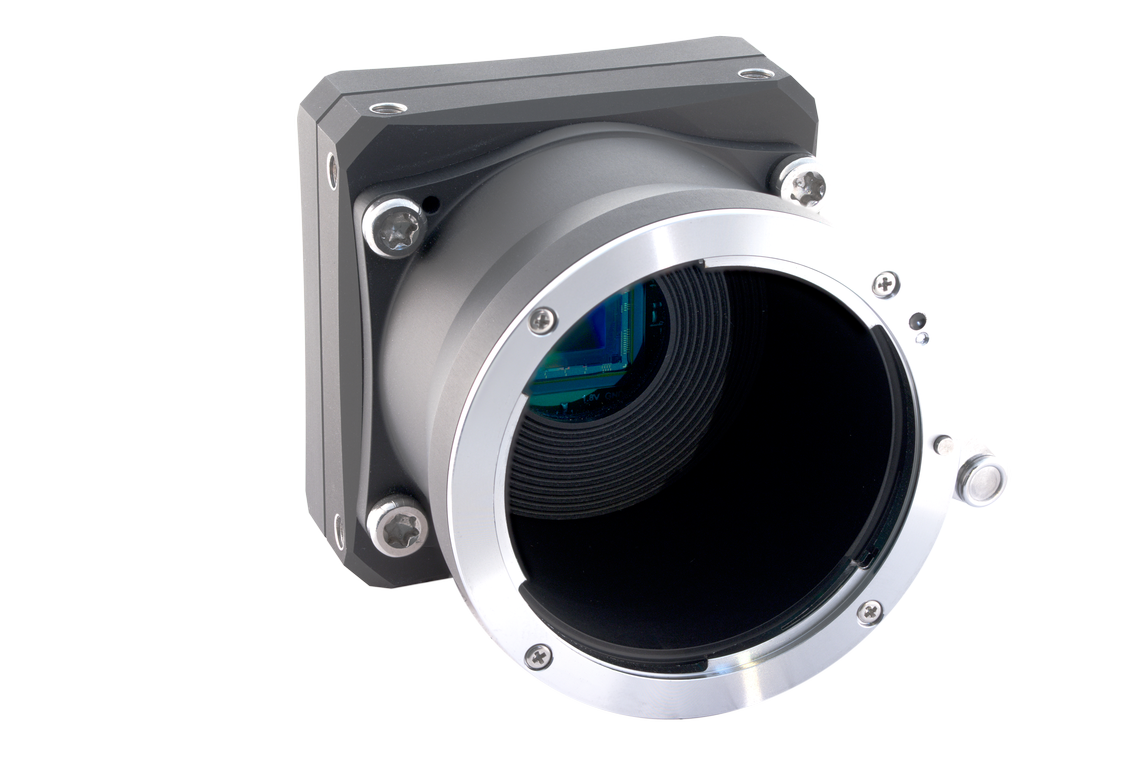CELERA 





Get more out of the light
Standard digital sensors capture the light intensity and wavelength for each pixel; however, some applications require the inspection of polarized light to get relevant information.
Instead of using external polarizing filters, Alkeria developed CELERA P and CELERA One P, two new camera models featuring a special polarization image sensor.
Thanks to the unique range of polarizer filters overlaid on top of the sensor's pixel array, CELERA P and CELERA One P get rid of all the external polarizing filters, combining the ease-of-use of the Alkeria USB3 cameras with the advanced capabilities of polarization imaging and the exclusive FusionView feature.
Based on the dual-USB3 platform of CELERA cameras, CELERA P is capable of reaching up to 152 fps while processing something like ~200 million vectors per second. On the other hand, CELERA One P, based on the single USB3 interface of the CELERA One cameras, gives the possibility of performing inspection processes with the same quality and features as CELERA P but in a convenient package.
Thanks to the powerful FPGA architecture, CELERA P and CELERA One P can execute polarization detection directly on-board without overloading the computer.
Why polarized light?
Light is electromagnetic radiation characterized by its intensity, frequency, propagation direction, and polarization. The latter expresses the geometrical properties of the wave oscillation: a light wave oscillating in a single plane is said to be linearly polarized.
Polarized light is essential in all those applications where you need to inspect objects made of transparent or highly reflective surfaces, such as glass, plastic, or metal. In these cases, you can reduce reflections by filtering out all the unnecessary light waves and picking only the essential information from selected polarization angles.
Polarized light can also facilitate all those applications where it's necessary to inspect curved surfaces and low-contrast objects, detect internal tensions, particles, or scratches in transparent materials, and so on.
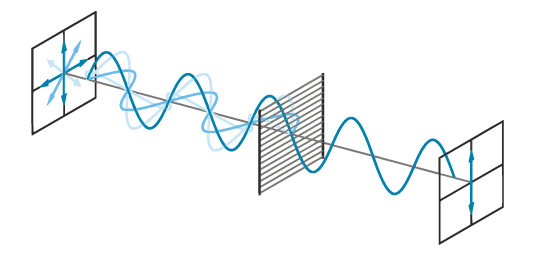 Image by Fffred via Wikipedia, CC BY-SA 3.0
Image by Fffred via Wikipedia, CC BY-SA 3.0
Polarizing sensor vs. filter
Standard cameras with monochrome or color sensors are only able to measure light intensity and wavelength; they cannot distinguish between different polarization conditions.
To get information about light polarization, special filters can be used. Polarizer filters absorb all the components of light at random angles, allowing only the light with a specific polarization angle to get through. These types of filters are usually mounted in front of camera lenses; if a change in polarization acquisition parameters is needed, a mechanical change of the filter orientation is necessary.
SONY, however, developed a machine vision global shutter sensor featuring a unique array of polarizer filters overlaid on top of the pixel array and beneath the micro-lenses. Thanks to this technology, the camera sensor directly acquires the data on light polarization without any additional filter on top of the lens, thus reducing system complexity.
Each pixel is provided with a dedicated polarized filter. Those filters are oriented at 0°, 45°, 90°, and 135° and arranged in a 2×2 pixel array, called “superpixel”.
How polarization sensor works
Thanks to the special polarization filter array applied to the sensor, each superpixel can acquire four different polarization angles simultaneously. Based on the information acquired from these four channels, a special interpolation algorithm computes data for all the in-between angles, as if a rotating polarizer had been put in front of a plain monochrome camera.
This measure is the key to deriving complex parameters such as the Degree of Linear Polarization (DoLP), an estimate of the polarization coherency of the light, and the Angle of Linear Polarization (AoLP), an estimate of the polarization angle.
Since the monochrome video format is not suitable for visualizing AoLP and DoLP information, we developed an advanced feature for our cameras: the FusionView feature. FusionView is a unique feature available only on CELERA P: it maps AoLP to the Hue component of the HSV color space and DoLP to the Saturation component, giving an intuitive preview of these properties of light.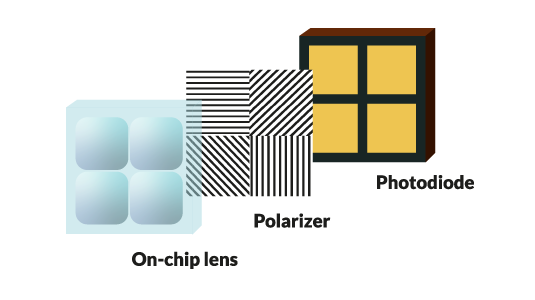
 FusionView feature example
FusionView feature example
CELERA and CELERA One Polarized features
- AoLP: Angle of Light Polarization
- DoLP: Degree of Light Polarization
- Stokes parameters
- Virtual polarization angle (derived through a dedicated algorithm)
- Parallel video streams from the same RAW image
- 4 polarization angles detected for each superpixel
- Reflections reduction algorithm
Accessories
CELERA P and CELERA One P are equipped as standard with a C-mount lens adapter.
Other accessories available upon request are:
Features
- Polarization image sensor
- FPGA architecture
- FusionView feature
- Tiny rugged design
- Versatile I/O
- Advanced triggering
 Polarization image sensor
Polarization image sensor
SONY Pregius® IMX250MZR and IMX264MZR are 5 MP global shutter sensors with unique polarization imaging capabilities. They feature a unique array of polarizer filters overlaid on top of the pixel array and beneath the micro-lenses; thanks to this technology, the camera sensor directly acquires the data on light polarization without any additional filter.
 FPGA architecture
FPGA architecture
Thanks to a powerful FPGA architecture, CELERA P and CELERA One P are capable of executing polarization detection directly on board without overloading the computer.
 FusionView feature
FusionView feature
FusionView is a unique feature available only on CELERA P and CELERA One P: it maps AoLP to the Hue component of the HSV color space and DoLP to the Saturation component, giving an intuitive preview of these properties of light.
 Tiny rugged design
Tiny rugged design
Small, ultra-lightweight, rugged aluminum case machined with high precision allows maximum installation flexibility even in space-constrained environments.
 Versatile I/O
Versatile I/O
With 2 inputs, 2 outputs, and 1 I/O, CELERA P and CELERA One P offer unprecedented flexibility for interfacing to outer world signals: direct encoder readout and strobed lightning have never been so easy.
 Advanced triggering
Advanced triggering
With CELERA P and CELERA One P, users can choose from a long list of triggering mechanisms. The acquisition can be driven by high/low logic levels, edges, and encoder position. Furthermore, the frequency of triggering signals can be internally converted to solve even the most challenging problems.
Download
![]()
Documents
![]()
Firmware
Drawings
Software
Technical specifications
| Model | C5S-MP | CO5S-MP | C12SX-MP |
|---|---|---|---|
| Resolution | 2464 x 2056 | 4112 x 3008 | |
| Sensor | SONY Pregius® IMX 250 MZR | SONY Pregius® IMX 264 MZR | SONY Pregius® IMX 253 MZR |
| Format | 2/3 " | 1,1" | |
| Pixel size | 3.45 µm x 3.45 µm | ||
| Color / Mono | Mono Polarized | ||
| Max Frame Rate | 152 fps | 35 fps | 63 fps |
| Pixel Format | MONO8/16, RAW8/16, RGB24 | ||
| A/D Conversion | 8, 10, 12 bits | 12 bits | 8, 10, 12 bits |
| Synchronization | External trigger, software trigger | ||
| Shutter Control | 17 µs ÷ 5 s (global shutter) | 20µs ÷ 5s (global shutter) | |
| Readout | Normal, ROI, frame combiner | ||
| Power Supply | < 3 W, powered by USB3 interface | ||
| Inputs / Outputs | 2 in (direct encoder interface), 2 out, 1 I/O (RS422, RS644 LVDS, LVTTL) | ||
| Lens Adapter | C-mount, F-mount (optional) | ||
| Interface | 2 x USB 3.2 Gen 1x1 | USB 3.2 Gen 1x1 | 2 x USB 3.2 Gen 1x1 |
| Weight | < 150 g (with C-mount adapter) | ||
| Size | 56 mm x 56 mm x 38.3 mm (with C-mount adapter) | ||
| Conformity | CE, RoHS, FCC, IC | ||
| Controls | Shutter, gain, sequencer, LUT, Virtual Angle, FusionView | ||
| Operative Temp | 0 ÷ 50 °C | ||
Sensor specifications (b/w and color) are extracted from the data sheet of the manufacturer excluding lens and filter.
C5S-MP
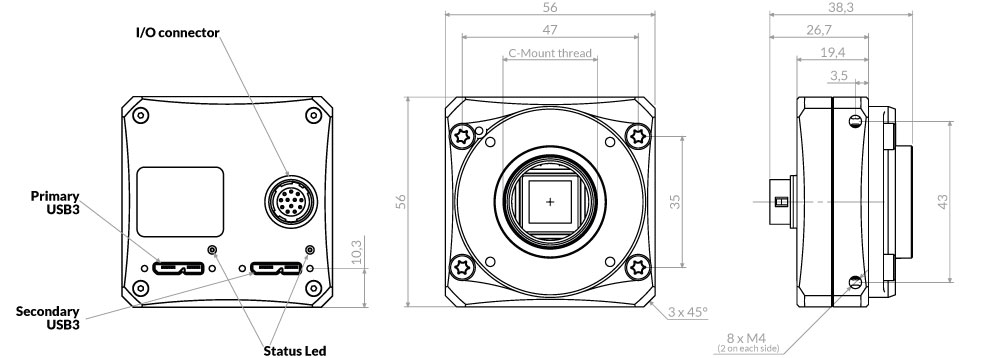
CO5S-MP
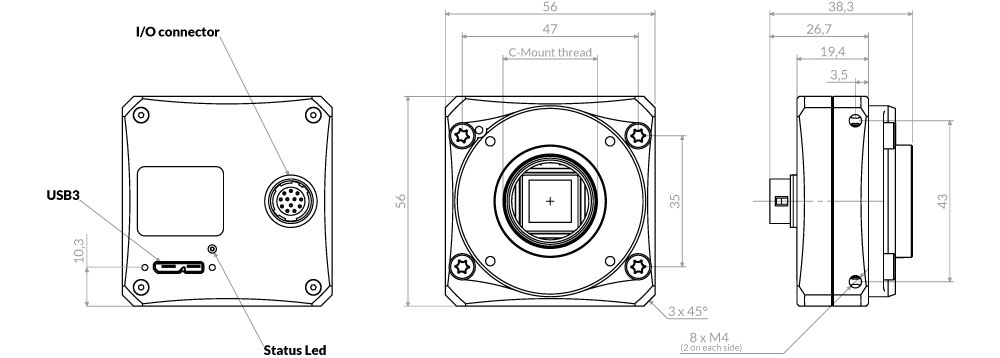
Sensor specifications (b/w and color) are extracted from the data sheet of the manufacturer excluding lens and filter. All dimensions are expressed in millimeters.
Camera specifications are subject to change without notice.
